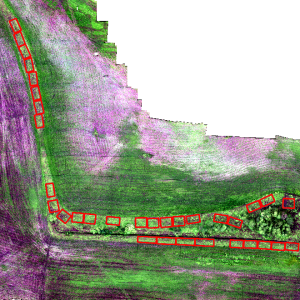
New EPA regulations restricted the use of many herbicides previously used to treat invasive species for these herbicides’ collateral damage to native species, but herbicides are unfortunately the only effective method for fighting many invasive plants. Some new herbicides that have been developed by another team to be within new EPA regulations are being tested in the field; using our image classification and computation methods, we helped analyze the collected data. This analyzed data, in theory, could be used to see how well each herbicide killed off the invasive reed canary grass over the course of the year.
Our project partner, Associate Professor Bogdan Strimbu, provided us with several large images of the entire plot of land over which this herbicide testing occurred, each image separated by time. Our task to classify these images was only a part of the larger effort to determine the best herbicides to use going forward on invasive reed canary grass, meaning we weren’t worried about the biological details, just the analysis of the images we were provided.
We used a graphic information software called QGIS along with Python scripts to perform our analysis. Our primary task was to classify the pixels within the images we were provided of each herbicide treatment (using a method known as Maximum Likelihood Estimate). After this analysis, we performed a validation check (using a confusion matrix) to estimate the accuracy of the classification. If our data had been validated, we would have sent it back to our project partner for further analysis, but our accuracy was determined to be too low for significant conclusions.
This project is important in ensuring that safer government regulations still allow our ability to fight invasive species in a practical manner. It is important to show that safer chemicals like herbicides can stay just as effective, or possibly even moreso, than their regulated counterparts. While our data was not ultimately accurate enough for our project partner, our progress was significant enough that future students on this project can build upon our methods to generate more accurate data, provided our documentation.

